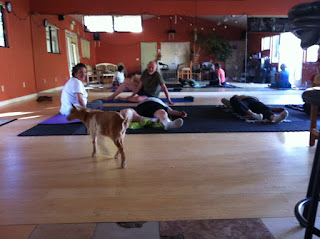Dr. Feldenkrais was the grandfather of neuroplasticity, observing changes in people and their brains several decades before technology existed to verify his hypotheses and anecdotal evidence. This excerpt from a blog by Gisele at Feldenkrais Manitoba gives us some fascinating insight into how Awareness Through Movement® and Functional Integration® lessons can work to keep us connected and cognizing! Best wishes! Carole
Check out the following quotes from <”
The Brain That Changes Itself: Stories of Personal Triumph From the Frontiers of Brain Science
“>by Norman Doidge about discoveries recently made in the neuroscience of learning and his conversations with neuroscientist physician Michael Merzenich:
“The cerebral cortex”, he says of the thin outer layer of the brain, “is actually selectively refining its processing capacities to fit each task at hand.” It doesn’t simply learn; it is always “learning how to learn.” The brain Merzenich describes is not an inanimate vessel that we fill; rather it is more like a living creature with an appetite, one that can grow and change itself with proper nourishment and exercise.”
“Finally, Merzenich discovered that paying close attention is essential to log-term plastic change. In numerous experiments he found that lasting changes occurred only when his monkeys paid close attention. When the animals performed tasks automatically without paying attention, they changed their brain maps, but the changes did not last. We often praise “the ability to multitask.” While you can learn when you divide your attention, divided attention doesn’t lead to aiding change in your brain maps.”
Other discoveries have had to do with the neurotransmitters (chemicals in your brain). When we experience the sense of well-being after doing something satisfying, it is like a reward. Reward in learning is important because it is then that we “secrete such neurotransmitters as dopamine and acetylcholine, which help consolidate the changes in the brain that have just been made. (Dopamine reinforces the reward, and acetylcholine helps the brain “tune in ” and sharpen memories.)”
Another important brain chemical is brain-derived neurotrophic factor, or BDNF. BDNF seems to do many things, and is crucial in infants and youth as it is what makes learning so effortless at these stages of our lives. After these initial critical learning period of youth are over, the only way the areas of the brain that need to be “turned on” to allow enhanced, long lasting learning are activated is only when something important, surprising, or novel occurs, or if we make the effort to pay close attention.
For those of you familiar with
Feldenkrais® lessons, you know that very often you are doing things that are very novel to you as adults, and that often, surprising changes happen. And, you are constantly directed in your use of attention.
It may be interesting to know that I’ve heard it said that Moshe Feldenkrais had once made the comment that he could do the same thing with his students teaching them mathematics. That, to me, says much about what the work is and isn’t about.
Here is some more from the book that may inspire you to continue learning in the true sense of the word:
“We have an intense period of learning in childhood, every day is a day of new stuff. And then, in our early employment, we are intensely engaged in learning and acquiring new skills, and abilities. And more and more as we progress in life we are operating as users of mastered skills and abilities.
…We still regard ourselves as active [in mid life], but we have a tendency to deceive ourselves into thinking that we are learning as we were before. We rarely engage in tasks in which we must focus our attention as closely as we did when we were younger…By the time we hit our seventies, we may not have systematically engaged the systems in the brain that regulate plasticity for fifty years…
…To keep the mind alive requires learning something truly new with intense focus. That is what will allow you to both lay down new memories and have a system that can easily access and preserve the older ones.”
Thanks for reading!

